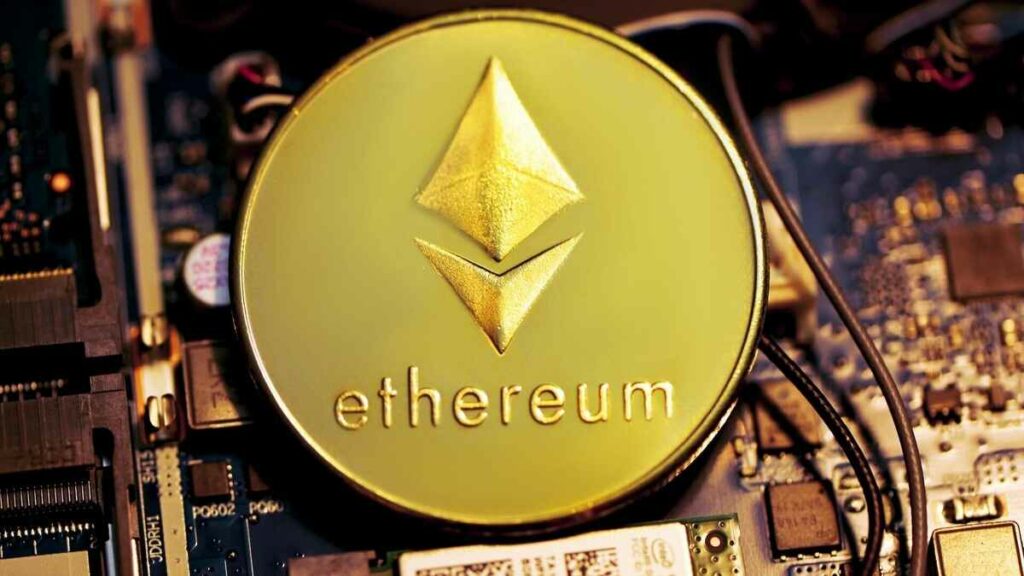Ethereum had a difficult year, with regular challenges from central authorities to experiencing price surges now and then. Despite striving for development, market entrance, and improvement of traditional assets, Ethereum still needs time to stand against the competition. It would be a waste for such a rich ecosystem to go to waste, where NFTs, DAOs, ETFs and many other tools make the market more valuable. The cryptocurrency also has great potential, considering it has fast transaction speeds, is extensively secure, and hashing algorithms are perfectly developed.
Ethereum staking is an important activity for investors, as is valuing DeFi assets. Unfortunately, staking is facing an impressive increase, while DeFi is in a challenging situation. Therefore, investors may not be able to receive the same incentives for leveraging DeFi protocols as before, and this hurts the whole ecosystem.

What is Ethereum staking?
Staking is an ingenuous way for users to secure the network and earn coins by depositing ETH to become validators. The responsibilities of this function are to store data, process transactions and add blocks to the Ethereum blockchain. The communities’ efforts for staking are maintaining it secure and accessible for anyone entering it.
Users who properly run the software and also check other validators’ work are offered rewards
because their efforts are making the network stronger, safer and more sustainable. That’s because, compared to mining, staking doesn’t require extensive and solid computational work to leverage a great job. There are many ways to stake ETH, but the first step is to provide 32 ETH for account activation as a validator.
You can:
- Stake alone, which is the most impactful way of doing it since you have complete control and rewards;
- Stake as a service, where you don’t need the computational part but only to handle your validator keys;
- Stake in pools so that you can hold your own assets in your wallet;
- Stake through centralized exchanges, but this is less beneficial, and you have to trust the exchange before operating any activities on it;
What are DeFi assets?
DeFi, or decentralized finance, is a unique way of undergoing traditional finance, so there are no central authorities included in the process of making transactions, exchanges or requiring other services. At the same time, the authority distribution ensures more control to individual users, so anyone wanting to buy, sell or take loans with crypto is simply doing P2P exchanges.
Custody is also a particular aspect of DeFi assets because owners are provided with the private cryptographic encryption key that enables custody. More or less, they’re similar to NFTs in this matter.
DeFi is usually based on the Ethereum blockchain, so they’re working on smart contracts. Therefore, DeFi benefits from many ETH ecosystem advantages, such as permissionless features, transparency, anonymity and dApps.
The DeFi environment provides plenty of opportunities for users to stake their ETH, which is why the two domains are intertwined. This is why they’re important when working together because they attract new users and incentivize validators. However, recent market difficulties led to an unbalanced relationship between them.
Why is Ethereum staking in constant increase?
Ethereum staking experienced a surge in popularity mainly because of liquid staking protocols that somehow were advantaged by FTX’s collapse because it allows users to have full control over their assets, which wouldn’t be possible with centralized exchanges. Therefore, many investors were attracted by a safer solution to regular exchanges, which caused this significant increase in value.
However, this considerable change affects the DeFi ecosystem because it provides more favorable yields, especially for locked assets. Therefore, the value of DeFi protocols decreased considerably due to high competition, so there’s nothing that can be done to regain their true power. Unfortunately, this happens often in the crypto market; when there’s a sudden flow of investors and users in one sector, the other is losing significance despite their connection.
At the same time, the crypto market suffered this year from many underperformances of Bitcoin and altcoins, leading to a general underwhelming investment experience. The SEC delays and overall skepticism from governments and authorities contributed to this situation. So, investors either left the crypto market for good or switched from one coin to another to diversify their portfolios and make up for future losses.
A similar event happens with the continuous fight between Bitcoin and Ethereum
Bitcoin and Ethereum are currently ruling the market, but it happens frequently that their course is different. That’s because Bitcoin is considered a genuine cryptocurrency since it’s the first coin ever created, and it leverages rewards from its own operations. On the other hand, Ethereum’s creation was based on Bitcoin but simply added more services on the blockchain.
Although similar, the two coins have diverse features that connect their value to performance. Therefore, it’s usual that when Bitcoin’s productivity is at its peak, altcoins are mediocre and vice versa. That’s why Bitcoin season and altcoin season have been defined as when one of these assets is doing better than the competitor, so investors could have a better insight into the market’s aspects.
Investors should be prepared for these situations to occur frequently within the sector because the industry is highly competitive, so they have to research thoroughly and change their strategies when one cryptocurrency is going down. A thorough knowledge of the bullish and bearish market is required to forecast possible outcomes in the crypto sector because it helps understand where the losses are coming from. But that’s not enough because investors have to keep their eyes on the news and see what companies are failing and whose success is directed to the crypto market. After all, this allows them to be fast in their strategy change.
Final considerations
Ethereum staking has been on fire lately, as the FTX situation led investors to look for safer and more beneficial ways of staking and validating the network while keeping their assets secure. However, the DeFi system is performing poorly, affecting the entire ecosystem’s productivity, so investors have to make their transactions wisely.
Press releases or guest posts published by Crypto Economy have sent by companies or their representatives. Crypto Economy is not part of any of these agencies, projects or platforms. At Crypto Economy we do not give investment advice and encourage our readers to do their own research.










